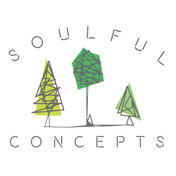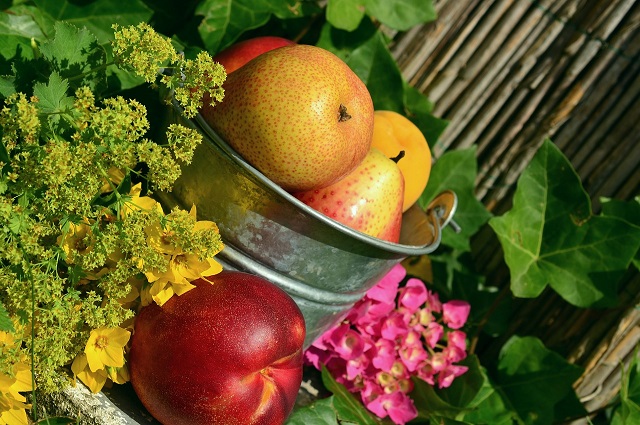Build Your Own Sustainable Garden
Sustainability is the principle many have been using nowadays to try to offset the bad habits we use in our everyday life that harm our climate. Whether it’s going solar, using natural energy to power your home, recycling, or having a sustainable garden and using environmentally friendly practices in your life, every little thing is important towards contributing to a healthier climate and environment.
When it comes to sustainable gardening, it is no more complicated than creating a conventional one which is not based on sustainable practices. It is a garden that uses natural, organic material, it is based on chemical-free practices, and it aims to conserve both energy and water as much as possible, using natural energy and resources.
As with any garden, you should be prepared to spend some time taking care of it and maintaining it, especially in the beginning when you are only starting one. You want it to succeed, to grow and last as long as possible, so taking some extra care of it, in the beginning, will make it worth your while later on. Learn everything you can, get informed beforehand, maintain it regularly, learn the rhythm of your plants and you will stay ahead of problems.
Let’s get started and learn some of the basic aspects of starting your own sustainable garden.
Choosing the best location and plants
It may not be the first thing you would think of, but choosing a perfect space for your garden is very important for several reasons. Since it should use as many natural resources as it can, it is important to place it somewhere with good sun exposure as well as access to enough water, so that the plants could grow naturally and become healthy and strong. The soil should be quality soil that will enhance their growth. If you’re not sure about your soil, you can have different areas of your backyard tested to see what the ideal spot for growth is.
When it comes to plants, it is always best and recommended to choose plants native to your area and those that are well-accustomed to your kind of soil and climate, as well as those that are drought-resistant. They will need less maintaining, less watering, and you will require less fertilizer, energy and other resources to grow them.
Another important rule of thumb is to group your plants according to their similar characteristics and needs. For example, plant those that need shade together in one place, where your garden will receive shade, and those that need more sun in the other part where they will be exposed to it sufficiently.
Preparing the tools
Some of the basic tools you’ll need are:
- a compost bin, where you will make your own, organic compost
- a soil tiller, garden rake or a hoe for breaking up the soil and making it softer
- a shovel and spade for digging seed holes
- something to water your garden with, a hose or a sprinkler
- a barrel where you will collect rainwater
Apart from these basic tools, it is a good idea to have an insectary in your sustainable garden. It is a common practice and an alternative to pesticides, because it is natural and organic. Simply place some plants that serve to attract beneficial insects in one part of your garden, and they will, in turn, take care of the harmful ones.
Planting and watering
As it was previously mentioned, it is recommended to plant your plants in groups, according to their needs and characteristics – amount of sun exposure they need, how much watering they demand, and even based on aesthetics, how they would look together.
When it comes to watering, it is one of the most important aspects because water is a precious natural resource and should be conserved as much as possible. Place your plants in groups according to their water needs, putting those that need more water in one part and those that need less; the drought-resistant ones, in another. This is the most efficient way of using water. You should also be careful to water your plants only when they need it, and not to over-water them.
Using rain barrels to collect water is the common sustainable practice in gardening, and the best way of conserving water and making the most of what nature gives you. As opposed to watering your plants manually, you can set up a drip irrigation system and connect the rain barrel to it. The water will be pumped into this system and each group of plants will receive the amount of water they need. It will save you both time and water.
Mulching and composting
Add compost or mulch to your garden, depending on what your plants need and what your resources are. If you have installed a compost bin, then you can make your own organic compost.
Composting is a way of creating your own fertilizer, free of any chemical matter, and healthy for the soil and the environment, and it can be made from leaves, weeds or even food scraps.
When it comes to mulch, it can also be made out of natural, organic matter such as leaves, wood, sawdust, or even newspaper. It serves to conserve moisture in the soil and prevent it from evaporating. An added benefit of mulching is that it will also prevent and fight weeds. Simply spread it around the plants in a thin layer and let it work its magic.
Follow these natural practices and you will have a healthy garden, free of pests, pesticides and chemicals.
Bio:
Matt is a content editor and a writer for roofing contractors. He creates articles and images on sustainability, technology, innovation, housing solutions and eco-friendly living.
Social media: https://www.facebook.com/ChoiceRoofs, https://twitter.com/choiceroof




Sorry, the comment form is closed at this time.